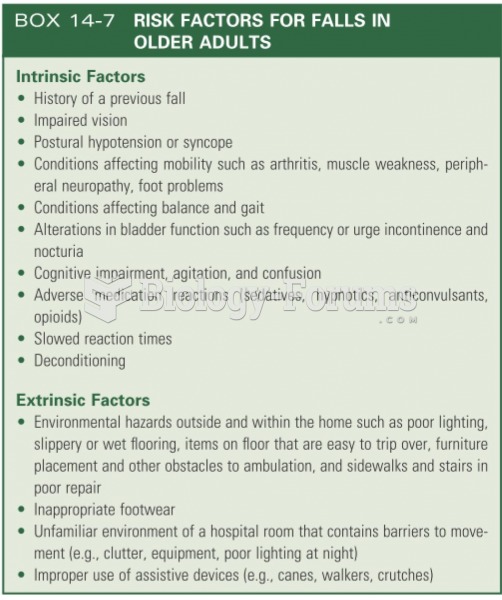Answer to Question 1
Correct Answer: 1,2,3,4
Rationale 1: Smoking cessation is a preventive measure to reduce the cardiovascular risk factors associated with diabetes.
Rationale 2: Lowering lipid levels is a preventive measure to reduce the cardiovascular risk factors associated with diabetes.
Rationale 3: Controlling blood pressure is a preventive measure to reduce the cardiovascular risk factors associated with diabetes.
Rationale 4: Optimal glucose control is a preventive measure to reduce the cardiovascular risk factors associated with diabetes.
Rationale 5: Preventing constipation is not a preventive measure to reduce the cardiovascular risk factors associated with diabetes.
Global Rationale: Smoking cessation, lowering lipid levels, controlling blood pressure, and optimizing glucose control are all preventative measures to reduce cardiovascular risk factors associated with diabetes. Preventing constipation will not prevent cardiovascular disease.
Answer to Question 2
Correct Answer: 1,2,3
Rationale 1: A family history of diabetes increases the client's risk of developing gestational diabetes.
Rationale 2: Obesity increases the client's risk of developing gestational diabetes.
Rationale 3: A previous spontaneous abortion increases the client's risk of developing gestational diabetes.
Rationale 4: A sedentary lifestyle is not a risk factor for the development of gestational diabetes.
Rationale 5: A diagnosis of hypertension is not a risk factor for the development of gestational diabetes.
Global Rationale: Family history of diabetes, obesity, and previous spontaneous abortion increase the risk of a client developing gestational diabetes. Sedentary lifestyle and hypertension do not directly increase risk.







